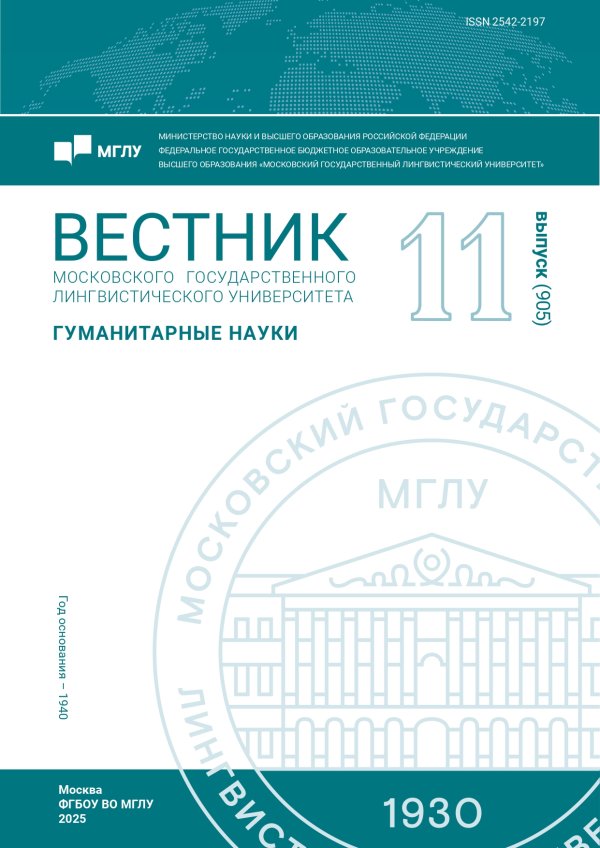Природно-ландшафтный код культуры в паремиях тюркских народов стран СНГ Центральной Азии
- Авторы: Батыршин Р.И.1
-
Учреждения:
- Межгосударственная телерадиокомпания «Мир», Национальный исследовательский университет «Высшая школа экономики»
- Выпуск: № 2(896) (2025)
- Страницы: 141-146
- Раздел: Культурология
- URL: https://journal-vniispk.ru/2542-2197/article/view/284019
- ID: 284019
Цитировать
Полный текст
Аннотация
Целью данного исследования является изучение природно-ландшафтного кода тюркской этнической культуры, объективированного в паремиях народов стран СНГ Центрально-Азиатского региона. Материалом исследования послужили пословицы и поговорки тюркских народов. В качестве методов исследования были выбраны онтологический, аксиологический, семантический и герменевтический подходы к научному анализу паремий. В результате исследования были выявлены основы этнической философии, которая послужила фундаментом в формировании природно-ландшафтного кода тюркской культуры. Доказано, что этот код не просто пассивно отражает окружающую среду, он активно формирует мировоззрение, систему ценностей, эстетические предпочтения, а также психологический профиль представителей исследуемой культуры.
Об авторах
Радик Иванович Батыршин
Межгосударственная телерадиокомпания «Мир», Национальный исследовательский университет «Высшая школа экономики»
Автор, ответственный за переписку.
Email: Batyrshin_RI@mir.tv.ru
кандидат филологических наук, председатель,
профессор факультета креативных индустрий института медиа
Список литературы
- Кольовска Е. Г. Экспликация природно-ландшафтного кода культуры в русских паремиях // Гуманитарные и социальные науки. 2014а. № 6 (1). С. 153–160. EDN TIHRCB.
- Кольовска Е. Г. Природно-ландшафтный код русской культуры в аспекте лингводидактики: дис. … канд. пед. наук. М., 2014б. EDN TZJOES.
- Цакоева А. А. Фразеологические единицы с компонентом «камень» как репрезентанты природно-ландшафтного кода культуры // Молодой ученый. 2023. № 4 (451). С. 479–483. EDN DWAUAA.
- Гуревич Л. С. Семиотика лингвокультурной идентичности личности // Лингвистика и лингводидактика в свете современных научных парадигм: Сб. науч. трудов. Вып. 7. Отв. ред. Федорюк А.В. Иркутск: Аспринт, 2024. С. 90–95. EDN RPORZD
- Генон Р. Кризис современного мира. М., 2008.
- Хайруллина Р. Х., Леднева А. В. Языковая природа паремий и их роль в формировании языкового мировидения народа // Современные проблемы науки и образования. 2015. № 1–1. EDN VIEVDR.
- Когнитивный анализ слова / Л. М. Ковалева и др. Иркутск: Издательство Иркутской государственной экономической академии, 2000. EDN RAKJBR.
- Дробышев Ю. И. Человек и природа в кочевых обществах Центральной Азии (III в. до н.э. – XVI в. н.э.). М.: Институт востоковедения РАН, 2014. EDN VXOAHJ.
- Гумилев Л. Н. Изменения климата и миграции кочевников // Природа. 1972. № 4. С. 44–52.
- Дружинин А. Г. Общественно-географические аспекты современного русско-тюркского взаимодействия в пространстве степной Евразии. Оренбург: Институт степи Уральского отделения Российской академии наук, 2023. EDN YKUWNV.
Дополнительные файлы











